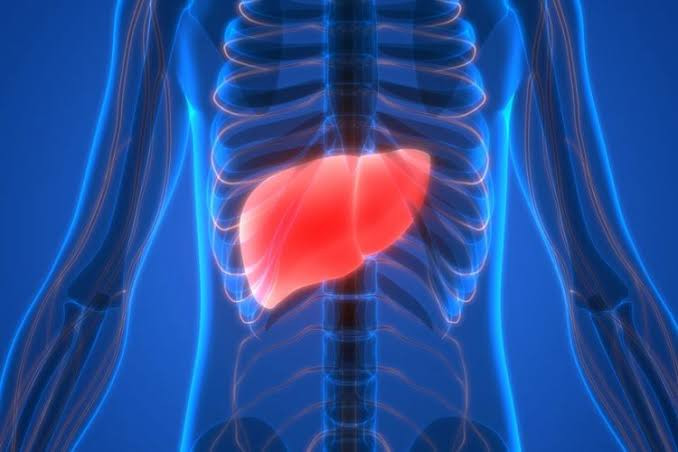Definition
A bile acid test is an test to measure the bile acid level. Bile acid is one of the important components of bile. Bile is a yellowish-green fluid produced by the liver and stored in the gallbladder. Apart from bile acids, bile also contains cholesterol, bilirubin, water, electrolytes and minerals.
Every day, the liver produces about 0.8-1 liter of bile. Bile plays an important role in digestion, breaking down fats into fatty acids for the body to absorb more easily. This liquid also has other functions, which are:
- Absorb fat-soluble vitamins, such as vitamins A, D, E, and K.
- Remove toxins and metabolic waste, such as bilirubin and cholesterol.
Bile acid test is used to assess liver function. That's because bile acids are a biomarker for liver damage. It can also help diagnose or monitor liver diseases such as hepatitis, liver cancer, cholestasis and cirrhosis.
Indications
Doctor usually recommends this test if you are suspected of having liver disease, symptoms of which include:
- Yellowing of the skin and eyes (jaundice)
- Nausea and vomiting
- Abdominal pain
- Fatigue
- Dark-colored urine
- Pale-colored stools
- Loss of appetite
- Unexplained weight loss
In addition, this test can also be done in the following conditions, such as:
- Assess liver function
- Monitoring the results of treatment for liver diseases such as hepatitis
- Diagnose bile reflux disease
- Diagnose cholestasis in pregnancy
- For screening in medical check- up
Contraindication
There are no contraindications or special conditions that prevent a person from having this test.
Preparations Prior to Test
A bile acid test has no special preparation other than fasting. You will be asked to fast for 12 hours prior to the test.
You are advised to consult your doctor before the test, as there are certain conditions or medications that may interfere with the laboratory results. These things can affect the results of the examination so that it does not reflect your true condition.
Test Procedures
Bile acid testing generally uses a blood serum sample of 0.25 - 0.5 ml. This blood serum sample is taken from a vein and will be collected into a special tube. The laboratory staff will wear special gloves and PPE (Personal Protective Equipment) when collecting the sample.
Before taking the blood, the staff will put on an elastic band and clean the needle stick area with antiseptic swabs. Usually the staff takes blood in the elbow crease area. After the blood is drawn and put into a special tube, the staff will remove the elastic band, apply pressure and clean the needle stick area with antiseptic swabs. This test procedure only lasts for a few minutes. The blood sample that has been obtained will be examined using special equipment in the laboratory, and the results can be known within a few hours.
Normal and Abnormal Values
The normal range of bile acids isn't differentiated by age and gender. In general, the normal value of bile acid tests is between 0-17 µmol/L. It's abnormal if the result is higher than normal (> 17 µmol/L).
However, each laboratory has a slightly different range of values from one laboratory to another because it depends on the tools or machines used.
Results and Suggestions (Follow-up Test)
Normal
If your bile acid test results show normal values, it's likely that you are already having a good healthy lifestyle. You are advised to maintain your current healthy lifestyle so as to prevent some diseases characterized by high levels of bile acids.
However, patients with intestinal malabsorption may show normal results on the bile acid test. Therefore, even if your bile acid test results show normal values, you are still advised to consult your doctor.
Abnormal or High
If your bile acid test results show high values, you should consult your doctor. The doctor may suggest a healthy diet and lifestyle change, or even initiate drug therapy to help lower your bile acid levels.
High bile acid levels can indicate liver disease, such as acute hepatitis, chronic hepatitis, cirrhosis, liver cancer, or obstruction of the gallbladder. In pregnancy, abnormal bile acid levels can be a sign of a medical condition called intrahepatic cholestasis of pregnancy.
In addition, elevated bile acid levels can also occur if you have any of the following medical conditions:
- Wilson's disease, a rare genetic disorder characterized by excessive accumulation of copper in organs, such as the cornea, liver, heart, and others.
- Hemochromatosis, a condition that causes the body to absorb too much iron from the food.
- Cholangitis, an inflammation of the bile ducts.
- Portal vein thrombosis, a thrombus (blood clot) in the portal vein in the liver.
Consult to The Right Doctor
The bile acid test results in adults can be consulted with a general practitioner, for further examination or to start therapy for an appropriate diagnosis. You can also consult an internal medicine doctor or gastroenterology-hepatology consultant to discuss your bile acid levels further. In pediatric patients, test results other than normal should be consulted with a pediatrician.
- dr Nadia Opmalina
Bile Acid. (2022). Retrieved 26 September 2022, from https://eclinpath.com/chemistry/liver/liver-function-tests/bile-acids/
Bile Acids, Total, Serum. (2022). Retrieved 26 September 2022, from https://www.mayocliniclabs.com/test-catalog/Overview/84689#Clinical-and-Interpretive
Bile Acids. (2022). Retrieved 26 September 2022, from https://www.southtees.nhs.uk/services/pathology/tests/bile-acids/
Assessment of Serum Bile Acid Profiles as Biomarkers of Liver Injury and Liver Disease in Humans. (2018). Retrieved 28 September 2022, from https://www.ncbi.nlm.nih.gov/pmc/articles/PMC5841799/












